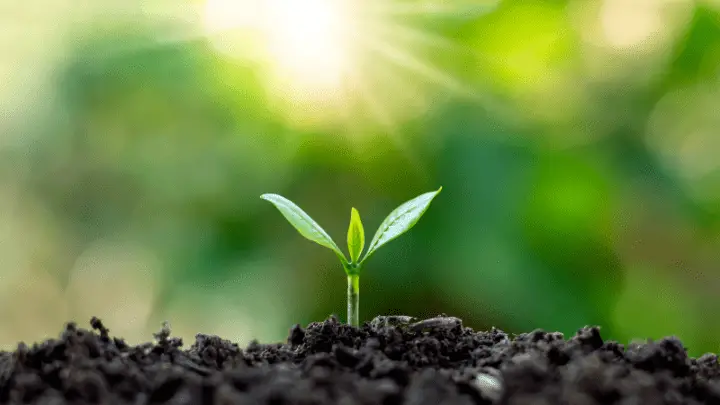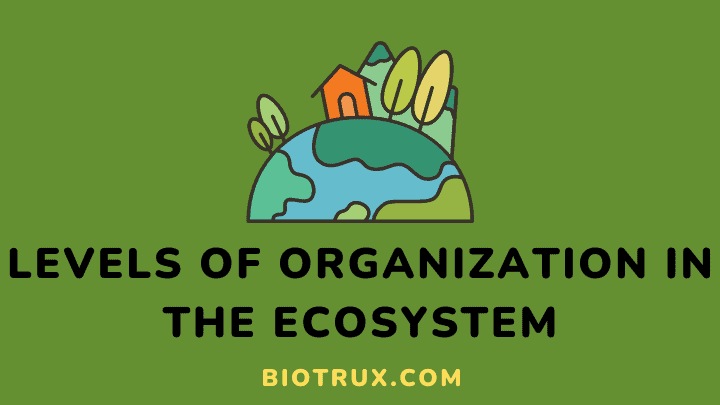Ecosystems are composed of a variety of living and nonliving components. These components interact in complex ways, creating an intricate system. Understanding the different levels of organization in an ecosystem can help us better understand how it functions and how we can conserve these vital resources.
This blog post will discuss the various levels of organization in an ecosystem and how they interact. I will explore the flow of energy in the ecosystem.
By understanding the organization of an ecosystem, we can develop strategies for maintaining the health and resilience of the environment for future generations. Let’s get started.
What is An Ecosystem?
An ecosystem is a complex network of living organisms and their physical environment. An ecosystem can be small, like a tree or pond, or large, like an entire ocean.
It includes all the living organisms (plants, animals, and microorganisms) in the area and the non-living components of their environment, such as air, water, soil, sunlight, and minerals.
The interactions between these organisms and the environment create an ecological balance that keeps the ecosystem functioning properly. Every species in an ecosystem plays a role in its health and stability, making preserving these environments essential for all living creatures benefit.
Importance of Understanding the Different Levels of Organization in An Ecosystem
Understanding the different levels of organization in an ecosystem is key to conserving and preserving the natural environment. We can manage our natural resources more effectively if we understand the intricate interactions between living things and their environment.
It is important to understand how each component within an ecosystem functions to develop effective strategies for protecting our environment.
Understanding the components that make up the system
At the simplest level, understanding the different levels of organization in an ecosystem begins with understanding the basic components that make up a system.
This includes living things such as plants, animals, fungi, and bacteria and non-living components such as climate, geography, and soil composition.
Within these components are distinct populations and communities, each with specific needs and requirements. It is essential to recognize that even the smallest changes in one part of the system can have a ripple effect on the other components.
Understanding the interactions between components in the ecosystem
The next level of organization involves recognizing the various interactions between components within an ecosystem. These interactions are complex and interconnected, with each species relying on other organisms for food or shelter.
For example, predators rely on prey for sustenance, and their presence is necessary to keep the prey population from becoming too large. Understanding these relationships and how they affect the balance of nature is vital for maintaining a healthy and functioning ecosystem.
Finally, it is important to understand how our activities can influence the health of an ecosystem. Human activities such as deforestation, overfishing, and pollution can drastically change the balance of an ecosystem.
To protect and preserve our environment, it is important to understand how our actions can impact our environment and take steps to reduce our negative impacts.
By understanding the different levels of organization in an ecosystem, we can be more mindful of our actions and better protect our natural environment.
What Are the Levels of Organization in the Ecosystem?
An ecosystem is a complex system of interactions between living and nonliving components. To better understand the dynamics of ecosystems, it is important to consider their levels of the organization.
The five levels of organization in an ecosystem are populations, communities, ecosystems, biomes, and biosphere.
- At the most basic level is the species, a group of similar organisms that have evolved from a common ancestor. The members of a species share physical characteristics and typically live in the same area and mate.
- Population: A population comprises all the individuals of a particular species living in a given area. It includes their numbers, their distributions, their age structure, and the way they interact with one another.
- Communities: A community is composed of multiple populations of different species interacting. Communities consist of different groups interacting with each other and their environment to survive and thrive.
- Ecosystems: An ecosystem consists of all the living (biotic) and nonliving (abiotic) components in a given area. It comprises multiple interacting communities and is a highly complex web of relationships.
- Biomes: A biome is a large region that can span several ecosystems, characterized by its climate and unique physical features. Some common examples of biomes include deserts, grasslands, temperate forests, and tundras.
- Biosphere: The biosphere is the global sum of all ecosystems on Earth. It includes land, freshwater, marine ecosystems, and the atmosphere. The biosphere is home to an incredible variety of species and is where evolution occurs.
Understanding different levels of organization in an ecosystem allows us to understand better how living things interact with their environment. This knowledge can help us protect and conserve our planet’s fragile ecosystems.
How Does the Flow of Energy Through An Ecosystem Work?

Ecosystems are complex systems that rely on continuous energy flow to sustain life. Every organism in an ecosystem is part of a food chain, meaning that each organism is a consumer and a producer.
As the energy enters the system through one source, it is transferred between organisms and eventually released as heat back into the environment. The primary source of energy in most ecosystems is sunlight.
Plants use photosynthesis to convert this energy into chemical energy which they store as sugars. This energy is then passed up the food chain when herbivores consume the plants and carnivores consume the herbivores.
Ultimately, these energy-rich molecules are broken down into simpler forms at the top of the food chain that can be released as heat energy. In addition to energy passing up the food chain, energy is cycling within an ecosystem.
This means organisms break down food and release waste products such as carbon dioxide, water vapor, and nitrogen. These materials are then used by other organisms in the ecosystem and can be converted into usable forms of energy.
Energy flow through an ecosystem is vital for maintaining life on Earth. Without it, organisms would not be able to obtain the necessary energy to survive. It is also important to recognize that all organisms in an ecosystem are connected and play an important role in energy flow.
FAQs
Why are some ecosystems more complex than others?
The complexity of an ecosystem is dependent on several factors such as climate, geography, topography, and type of organisms present.
What is the most important level of organization in the ecosystem?
All levels of organization in an ecosystem are equally important. Together they are responsible for sustaining the delicate balance of life on our planet.
How can humans help preserve levels of organization in nature?
Humans can help preserve levels of organization in nature by reducing pollution, protecting habitats, and limiting the harvesting of natural resources.
How do species interact with each other in an ecosystem?
Species interact through direct competition, predator-prey relationships, mutualism (when both species benefit), and commensalism (when one species benefits and the other is unaffected).
Final Thoughts
Organizing the environment into levels of the organization is essential to understanding how organisms interact with their surroundings. In the most basic sense, all living things comprise cells, which interact and combine to form tissues, organs, and organisms.
These organisms interact to form communities, which then form the various ecosystems that we see in nature. From the smallest unit, a species, to the largest system, the biosphere, we can recognize the intricate connection of life necessary for survival.
Ecosystems are organized at different levels of the organization, giving us insight into how organisms, their habitats, and their environments interact. Ultimately, this knowledge can help us better manage our environment and ensure its sustainability for future generations.
Explore Biotrux for more exciting articles about preserving the ecosystem.
Thanks for reading.
